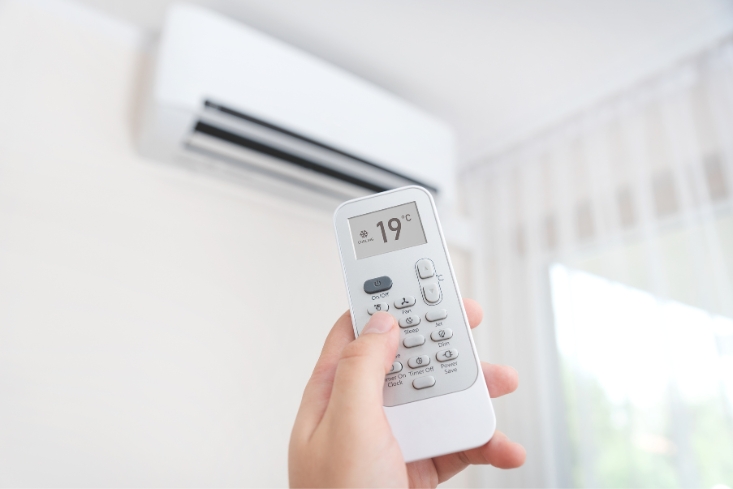Choosing the Perfect Air Conditioner: A Comprehensive Guide

Choosing the Perfect Air Conditioner: A Comprehensive Guide
As temperatures climb, a reliable air conditioner can be your best ally in maintaining a cool and comfortable home. But with so many options available, how do you choose the right one? This guide will walk you through the essential factors to consider, helping you make an informed decision.
Understand Your Cooling Needs
The first step in choosing an air conditioner is understanding your cooling needs. This involves considering the size of the space you want to cool, the climate you live in, and your budget.
- Room Size: Measure the area of the space you need to cool in square meters (m²). Air conditioners are rated by their cooling capacity in British Thermal Units (BTUs). Here's a general guide:
- 9 to 14 m²: 5,000 to 7,000 BTUs
- 14 to 28 m²: 8,000 to 12,000 BTUs
- 28 to 42 m²: 12,000 to 18,000 BTUs
- Over 42 m²: 18,000+ BTUs or consider central air conditioning
- Climate: Consider your local climate. If you live in an area with high humidity, you might need a more powerful unit or one with a dehumidifying function.
- Budget: Determine your budget, including the cost of the unit, installation, and ongoing operating costs.
Types of Air Conditioners
Understanding the different types of air conditioners can help you choose the best option for your needs:
- Window Units: These are self-contained units that are installed in a window. They are relatively affordable and easy to install, making them a popular choice for cooling individual rooms.
- Portable Units: Portable air conditioners can be moved from room to room. They require a vent to expel hot air, usually through a window, and are ideal for temporary cooling solutions.
- Split Systems: These consist of an indoor unit and an outdoor unit. Split systems are efficient and quiet, suitable for cooling individual rooms or small spaces.
- Central Air Conditioning: Central systems cool entire homes or buildings through a network of ducts. They are the most efficient for large spaces but also the most expensive to install.
- Ductless Mini-Split Systems: These offer the benefits of split systems without the need for ductwork. They are ideal for homes without existing ducts or for adding cooling to specific areas.
Choosing the Right Air Conditioner
- Cooling Capacity: Match the cooling capacity of the air conditioner to the size of your room. Use the guide above to determine the appropriate BTU rating for your space.
- Energy Efficiency: Look for units with a high EER (Energy Efficiency Ratio) or SEER (Seasonal Energy Efficiency Ratio) rating. These models use less energy, saving you money on electricity bills.
- Noise Level: Consider the noise level, especially if the unit will be in a bedroom or living area. Check the decibel (dB) rating to ensure it won't be disruptive.
- Features: Modern air conditioners come with various features such as programmable timers, remote controls, sleep modes, and smart connectivity. Choose the features that best suit your lifestyle.
Maintenance Tips
- Regular Cleaning: Clean or replace filters every month during the cooling season. Dirty filters reduce efficiency and can lead to system failures.
- Check the Coils: Both the evaporator and condenser coils should be cleaned annually. Dirt on the coils reduces the system's ability to absorb and expel heat.
- Inspect the Fins: The fins on the evaporator and condenser coils can bend and block airflow. Use a fin comb to straighten any bent fins.
- Clear the Area Around the Unit: Ensure there is at least 60 cm of clearance around outdoor units to allow proper airflow. Remove any debris, leaves, or grass clippings.
- Professional Servicing: Schedule annual maintenance checks with a professional to ensure your system is running efficiently and to catch any potential issues early.
Tips for Maximizing Efficiency
- Use a Programmable Thermostat: Set your thermostat to raise the temperature when you're not home and lower it when you are, reducing energy use without sacrificing comfort.
- Seal Leaks: Ensure your home is well-insulated and seal any leaks around windows and doors to prevent cool air from escaping.
- Use Ceiling Fans: Ceiling fans help circulate cool air more effectively, allowing you to set your thermostat a few degrees higher.
- Close Blinds and Curtains: Keep blinds or curtains closed during the hottest parts of the day to reduce heat gain from the sun.
- Limit Heat-Producing Activities: Avoid using ovens, dryers, and other heat-producing appliances during the hottest parts of the day. Consider grilling outside or using a microwave instead.
Conclusion
Choosing the right air conditioner can make a significant difference in your comfort and energy bills during the hot summer months. By understanding your cooling needs, selecting the appropriate type of unit, and maintaining it properly, you can ensure a cool and comfortable environment in your home. Stay cool and enjoy your summer with the perfect air conditioning solution!
